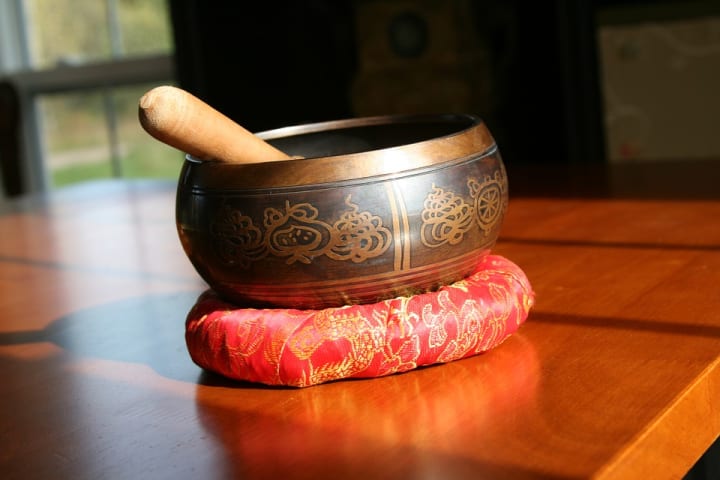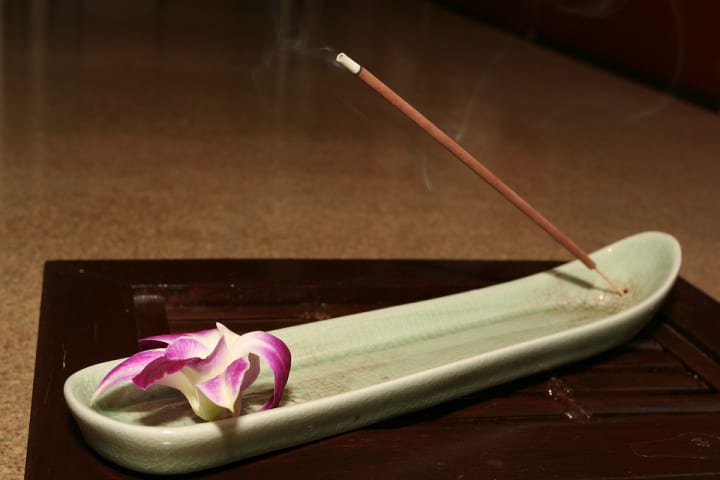
History
The Buddha was born a royal prince in 624 BC in northern India but is now part of Nepal. His parents called him Siddhartha, he lived as a prince, but when he was 29 years old he ventured to the forest where he followed a spiritual life of meditation. After six years he attained enlightenment under the Bodhi Tree.
I am not going to say too much about the background and history because this is a subject that is well documented, please see links below of you want a more in depth history:
Needless to say, the Buddha has become the symbol of meditation because of his story of reaching enlightenment. His teachings and way of life has taken the hearts of millions.
The teaching revolves around:
Meditation
You can employ some or all of the tools listed below with your meditation, all of which are just symbols helping you to focus. The list of techniques are endless, but at least you can experiment and use the ones that suit you most after trying them out.
First of all, you need to make sure you are not going to be interrupted for the length of time you are going to meditate for. As I have said before it doesn't matter if it is one minute, five minutes, or one hour, decide how long you are going to meditate for and allow a disruption free environment for that time period. I often like to meditate without a time limit, but it is worth timing yourself to begin with until you get used to a varying time limit.
It's good to have some personal preparation, such as washing and changing into something comfortable. Doing this in a slow and methodical way will begin to prepare your mind for the act of meditation. I know we don't always have time for this in our busy daily lives, but this will have added benefits if you can add this to your daily routine.
Generally you need to make yourself comfortable, forget about sitting cross-legged on the floor (unless you find this comfortable), but you need to have your back straight as you can with your head balanced, not too far forward or backward. Your head can weigh enough to bring you discomfort if it is not balanced correctly over a period of time. If your hands are empty, then they should not be interlocked but placed gently, one on top of the other, supported in your lap or on your thighs, so that you are not taking the full weight of your arms, dragging on your shoulders. It is important to be comfortable, but not so much so that you can easily drift into sleep; so no lying down, unless this is the only position that you have an option of for the time you are meditating.
It seems contradictory, but your mind needs to be focused while being free of thoughts that are trying to distract you from the present moment. Eventually, you can learn to observe thoughts arising and let them go without being drawn into the subject matter. Watch them fade and remain in the moment and in this way you are open to so many possibilities for your mind to be free, creative, and inspired. What you need most in life may arise in this moment, and it is this thought that you can explore further if you feel led in that direction, but mostly you want to be free of thoughts in general and allow you mind to rest and recuperate. This is needed just as much as your body needs rest from physical activity, your mind needs rest from mental activity and sleep is not always enough to achieve this.
Singing Bowl

Bowls come in all shapes and sizes, the sound they make resonate for a reasonable length of time with one strike, but can be perpetuated by rubbing the the striker around the rim of the bowl creating one continuous note. This sound can help centre the mind and gives you something to focus on while you empty yourself of needless thoughts.
Prayer Beads

In Tibetan Buddhism, malas of 108 beads are used, 108 often being a sacred number. Mantras can be recited for different purposes linked to working with mind.
Malas are used for keeping count while reciting, chanting, or mentally repeating a mantra such as Om Mani Padme Hum. This mantra itself has many interpretations for its meaning, but it is ultimately supposed to bring you into a state of being. This can be done silently or aloud, but Buddhists often use their voices to find their state of being, helped through vibration and focus.
Prayer Wheel

The prayer wheels are a silent way of reciting the mantra Om Mani Padme Hum as they have the prayer written 108 times on a scroll and placed inside the cylindrical wheel. When you turn the drum of the wheel a whole turn, you are effectively repeating the mantra. The prayer wheel come in all shapes and sizes, they can even be bought as a necklace and you can spin the wheel while you meditate.
Incense

Incense can be lit for many reasons, but it is a nice ritual to get into before you start meditating, as it is a symbol of cleansing the mind. They also smell good too, and that lingering smell can be a constant reminder to keep your mind free of unsolicited thoughts.
About the Creator
GARY DEAN
Started writing in 2009, after getting made redundant from my job. Now it is a hobby, something I can enjoy and play about with.
https://twitter.com/Gaznt?s=09
https://sites.google.com/site/gdeanscreativewritingspot/Home






Comments
There are no comments for this story
Be the first to respond and start the conversation.